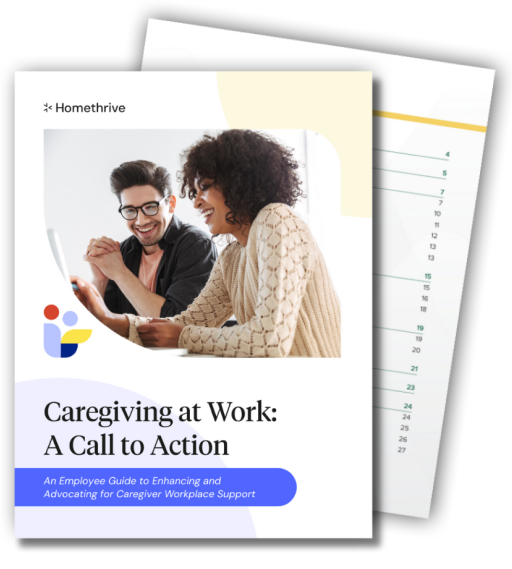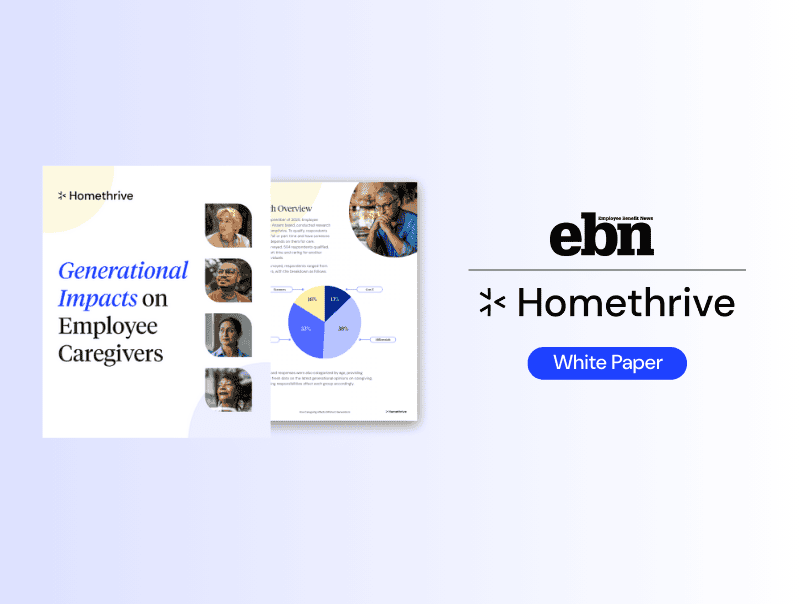Finding great employees is hard. Keeping them? Even harder.
It’s not just about posting a job and hoping the right person shows up. These days, people have options—lots of them. And most of them won’t think twice about leaving if something better comes along.
In fact, studies show that 65% of workers believe they could find a better job if they looked, and 40% are planning to look within the next year. If that doesn’t make you want to rethink your hiring and retention strategy, nothing will.
So let’s talk about attracting and keeping the employees who make your company better. The kind who don’t just clock in and out, but contribute, care, and stick around.
The Real Cost of Losing Good People
Before we dive into the “how,” let’s talk about the “why.” Losing employees is expensive—not just financially, but emotionally and culturally.
- Replacing the average employee costs about 33% of their annual salary
- For specialized roles, that can go up to 150%
- Industries like healthcare and tech feel it the hardest, with replacement costs running $40,000 to $150,000 per person
But the hidden costs? They’re even sneakier. When someone walks out the door, you’re not just losing a worker—you’re losing institutional knowledge, team stability, and momentum. Morale takes a hit. Deadlines get missed. Projects slow down. Clients might even start to look elsewhere.
That’s why it pays—literally and figuratively—to make hiring and retention a top priority.
Start With Your Employee Value Proposition (EVP)
Think of your EVP as your company’s answer to the question: “Why should someone choose to work here instead of anywhere else?”
It’s your promise to employees. And it has to be something they can feel, not just something you slap on your website.
What Is an Employee Value Proposition?
Imagine two companies offering identical roles with the same salary. One promises flexible hours, growth opportunities, meaningful work, and a leadership team that genuinely listens.
The other? A desk, a paycheck, and radio silence from HR. Most people wouldn’t think twice about where they’d rather be. That’s the difference a strong Employee Value Proposition makes.
Why It Matters
An Employee Value Proposition (EVP) is the unique blend of benefits, experiences, and values a company offers in exchange for an employee’s skills and commitment. It’s not just about compensation, it’s about purpose, culture, career development, work-life balance, and the overall employee experience. When done right, an employee value proposition strategy helps people feel connected to their work and proud of where they belong.
The Human Side of EVP
At its core, an EVP reflects how a company shows up for its people, through big moments, like promotions, and the small ones, like recognizing someone’s hard work on a tough day. It’s how an organization tells its team, “You matter here.”
Here’s how an employer can start developing an employee value proposition:
- Ask your people what they love. Skip the assumptions. Sit down with your team or run anonymous surveys. What keeps them coming back? What frustrates them? You’ll be surprised at what emerges when you truly listen.
- Check out the competition. Look at what other companies are offering. Browse their job ads, careers pages, and Glassdoor reviews. How does your offer stack up?
- Find your edge. Maybe it’s your flexibility. Maybe it’s your growth opportunities or your tight-knit culture. Figure out what makes your place special—and own it.
- Write a compelling statement. Don’t get bogged down in buzzwords. A clear message about what employees can expect from you goes a long way.
Once your EVP is solid, you’ll find the next steps much easier.
7 Ways to Attract Top Talent
Supercharge Your Social Media Presence
If you think social media doesn’t matter in recruiting top talent, think again. Approximately 75% of candidates research a company’s online presence before applying. So make yours worth checking out.
- Post consistently (2–3 times per week is a great start)
- Share behind-the-scenes moments with your team
- Highlight your values in action—not just statements, but stories
- Be responsive when people comment or ask questions
You don’t need to be flashy. You need to be real. Authenticity is the secret weapon in knowing how to retain top talent.
Build a Talent Pool (Even If You’re Not Hiring Today)
Not every strong candidate will be available when you have an opening. That’s where building a “bench” comes in.
- Keep a database of promising candidates who might fit future roles
- Send occasional updates to stay top-of-mind
- Connect on LinkedIn and engage with their content
It’s like building a relationship. When a position opens, you’ve already laid the groundwork.
Speed Up the Hiring Process
You’ll lose top talent to faster companies if your hiring process is too slow. Studies show that 57% of candidates lose interest if a process takes too long.
- Limit interviews to 2–3 rounds
- Schedule interviews within the same week if possible
- Give prompt feedback at every stage
- Make decisions quickly—top talent won’t wait
Don’t mistake “thorough” for “slow.” You can be both fast and thoughtful.
Polish Your Reputation
Job seekers care about your reputation. Many prospective employees won’t apply if they see too many negative reviews. That’s a stat you can’t ignore.
- Encourage current employees to leave honest reviews on sites like Glassdoor or Indeed
- Respond to negative feedback with humility and action
- Share any awards, press, or shout-outs on your careers page
- Be transparent about challenges and how you’re addressing them
People don’t expect perfection—they expect progress.
Create a Mission That Resonates
A strong mission does more than decorate your wall. It helps people feel like they’re part of something bigger.
Make sure your mission:
- Explains why your company exists (beyond profit)
- Uses simple, inspiring language
- Connects to something meaningful or impactful
- Is reinforced through your culture and daily decisions
A clear purpose can magnetize people who want more than just a paycheck.
Write Good Job Descriptions
Too many job descriptions are just buzzword bingo. You want yours to stand out in the crowd.
- Start with the impact of the role—how does it make a difference?
- Use friendly, approachable language
- Separate must-haves from nice-to-haves to avoid scaring off good candidates
- Include pay ranges and benefits—transparency builds trust
Treat your job ad like a pitch to your dream candidate. Because that’s precisely what it is.
Nail the Onboarding Experience
First impressions matter. Employees with solid onboarding experience are 58% more likely to stay for three years or more.
Make your onboarding:
- Welcoming (assign a buddy or mentor)
- Structured (use a 30/60/90 day plan)
- Connected (schedule intros with teammates and leaders)
- Fun (a little swag or lunch never hurts)
It’s not about perfection—it’s about making people feel like they belong from Day One.
8 Ways to Keep Your Best People
Embrace Flexibility
Let’s face it: after the pandemic, flexibility is no longer a perk—it’s an expectation. About 54% of employees say they’d leave for a job with more flexibility.
That could mean:
- Remote or hybrid work (with clear guidelines)
- Flexible hours (core hours + trust)
- Compressed workweeks (4 x 10-hour days)
- Focus on results, not just time in the seat
When people feel trusted to manage their time, they work better, not less.
Upgrade Your Benefits Package
Great benefits show people you care. And no, it’s not always about flashy perks.
Consider adding:
- Mental health days or expanded sick leave
- Learning and development stipends
- Paid volunteer days
- Sabbaticals after milestone years
- Wellness support (gym memberships, therapy subsidies, etc.)
Offering extended benefits that include caregiver benefits for employees may also keep you from losing employees, not to other organizations, but to the overwhelming responsibilities that they have to their family and loved ones who need help coordinating their care.
Research shows that nearly 73% of adults in the U.S. have some form of caregiving responsibilities, which include caring for children, parents, spouses, other relatives, or friends with disabilities or chronic illnesses. These employees especially are at risk of burnout, or leaving their positions to focus their time on caregiving. Caregiving benefits offer your employees another way to find support that may reduce their stress before they decide to retire early.
Even small, thoughtful benefits—like birthday PTO or pet insurance—can set you apart.
Build a Culture People Want to Be Part Of
Culture isn’t ping pong tables and pizza parties. It’s how people treat each other when no one’s watching.
To build a great culture:
- Model values from the top down
- Recognize people often and specifically
- Address toxic behavior immediately—yes, even from your best performer
- Create time for connection, both inside and outside of work
When people feel psychologically safe, they thrive.
Conduct Stay Interviews (Not Just Exit Interviews)
Want to know what keeps people around? Ask them—before they hand in their notice.
Try conducting a stay interview with questions like:
- “What do you enjoy most about your work?”
- “Is there anything that frustrates you?”
- “Have you thought about leaving? What made you stay?”
- “What would tempt you to leave?”
Make it a regular check-in, not a one-time event.
Offer Clear Paths for Growth
One study suggests that 63% of employees leave because they don’t see advancement opportunities. That’s a fixable problem.
Help people grow by:
- Creating visual career paths and promotion guidelines
- Having regular career conversations (not just annual reviews)
- Posting internal jobs first
- Launching mentorship or coaching programs
People want to know their hard work is going somewhere.
Celebrate Success and Recognize Contributions
Feeling appreciated goes a long way. In fact, 53% of employees say they’d stay longer if they felt more appreciated.
Ideas to try:
- Spot bonuses or thank-you gifts
- Shout-outs in meetings or newsletters
- Handwritten notes from leadership
- Peer-to-peer recognition systems
The more specific, the better. “Thanks for staying late to help with that deadline” hits harder than “Good job.”
Pay Competitively (and Fairly)
Pay isn’t everything, but it matters—especially when it feels unfair or outdated.
Keep compensation competitive by:
- Reviewing salaries at least annually
- Offering performance incentives or profit-sharing
- Building in retention bonuses at milestone years
- Being transparent about how pay decisions are made
If you’re underpaying your top performers, don’t be surprised when someone else scoops them up.
Foster Belonging Through Inclusion
Diversity without inclusion is just optics. Real belonging takes effort—but it’s worth it.
To create an inclusive culture:
- Diversify hiring panels
- Offer bias-free and inclusive leadership training
- Celebrate different cultures and identities
- Make sure everyone’s voice is heard
People who feel seen, respected, and supported stay and bring their full potential.
The Bottom Line
Attracting and retaining top talent staffing isn’t about gimmicks. It’s about building something people want to be part of.
Yes, it takes work. Yes, it takes intention. But when you get it right, the payoff is enormous: engaged employees, lower turnover, stronger teams, and better results across the board.
So, here’s your challenge: pick just one area and start there. Ask your team what matters to them. Then build from there.
Because at the end of the day, people don’t leave jobs—they leave experiences. And you get to design the experience they’ll remember.
By partnering with Homethrive, you can help employees reclaim valuable time and energy to focus on their work, families, and personal well-being. Show your team they don’t have to choose between their careers and caregiving responsibilities. Contact us today to explore how Homethrive can enhance your employees’ well-being and productivity.







